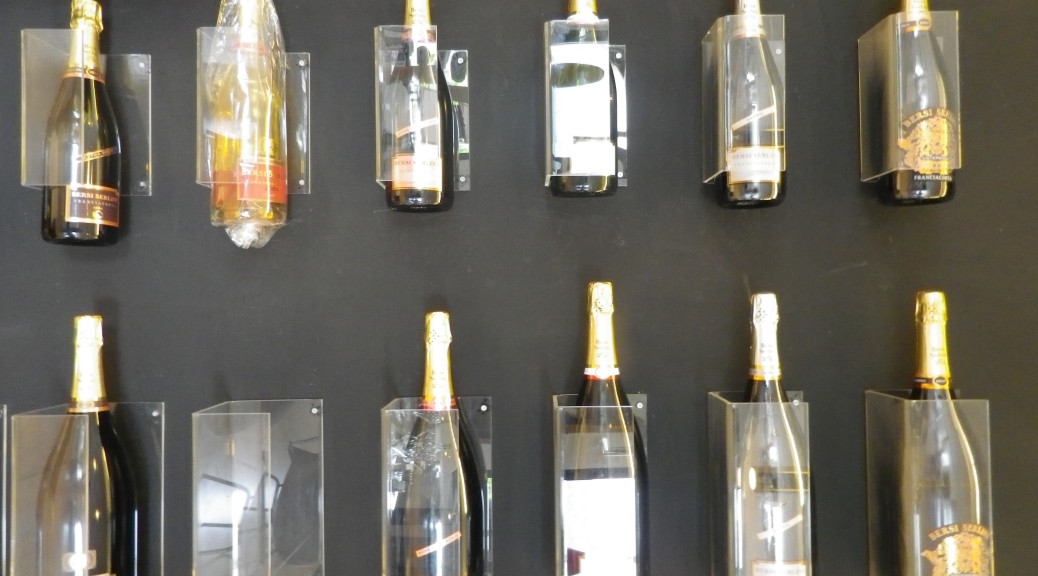What I Learned:
The wine region of Franciacorta was given a huge boost in the 11th Century with the arrival of monks, to include some from the famous French monastery of Cluny. Since then, the wines have only improved. The term Franciacorta can refer not only to the territory, but also the method of production. In recognition of its superior quality, wines from this region using the defined Franciacorta production techniques, were the first to be awarded the quality marking of DOCG (Denominazione di Origine Controllata e Garantita), the highest rating in the Italian quality pyramid.
Hence a label bearing the word Franciacorta indicates not only the territory, but also the fact that you are drinking a top quality wine for this region. These will be sparkling wines, which range from the driest: Dosaggio zero (non dose), to Extra Brut, Brut, Extra Dry and Sec (Dry), to the sweetest, a Demi-Sec. The region’s wine makers also offer a sparkling Blanc de Blancs (known locally as “Saten”), and a sparkling rose.
Wines labelled Curtefranca, on the other hand, fall under the DOC qualification. These are excellent still white or red wines: Curtefranca DOC Rosso, or Curtefranca DOC Bianco.
Chardonnay grapes play a large role in this region. In the Curtefranca DOC Bianco for example, there must be a minimum of 50 percent Chardonnay in the mix. Even a wine using nothing but Chardonnay results in a wine that is not your typical Chardonnays however, and provides an interesting tasting experience. Additionally, Chardonnay grapes form a base for most of the Franciacorta sparkling wines.
Likewise, Pinot Bianco also plays a large role in wines from this region. It is most often combined with Chardonnay to produce the Franciacorta sparkling wines.
The red varietal used in the Franciacorta DOCG production is the Pinot Nero. The Franciacorta Rose will contain at least 25 percent Pinot Nero, in addition to Chardonnay and Pinot Bianco.
Other red varietals grown here include a relatively unique varietal, the Carmenere, believed to have come originally from France, (like the monks, maybe), Merlot, and the Cabernets Franc and Sauvignon.
What I Tasted:
Franciacorta Brut, DOCG, Contadi Castaldi: (about 80 percent Chardonnay, 10 percent Pinot Nero, and 10 percent Pinot Bianco): scent of sandalwood, with peach and hints of vanilla, fine effervescence.
Franciacorta Brut Saten, Bersi Serlini, DOCG: clear, pale gold color with fine bubbles produces a soft, creamy feel. This saten has low acidity, and very slight hints of green apple and fresh cut grass.
Franciacorta Extra Brut, Millesimato, DOCG, C. Ziliani, 2009: (about 75 percent chardonnay and 25 percent Pinot Nero): a wonderful sparkling wine, with intense yellow color; minerally, fruity (peach, pear), with a medium mouthfeel.
Franciacorta Brut, DOCG, Bredasole: (about 50 percent Chardonnay, with the balance being Pinot Bianco and Pinot Nero): floral with a bit of honey, slight minerality.
Curtefranca DOC, Feghettina, 2010: (80 percent Chardonnay, 20 percent Pinot Bianco): melon, floral and honey notes, with a hint of minerality.
Curtefranca Polzina, DOC, Barone Pizzini, 2012: (Chardonnay): floral (maybe honeysuckle) and mineral notes, slightly tart, and refreshing.
Curtefranca DOC; Cavalleri 2011: (Chardonnay) a dry white wine floral and honey notes, with hints of oak and smoke.
Curtefranca Rosso, Ca’ del Bosco 2009: (a blend of Merlot, Cabernet Franc and Cabernet Sauvignon, Barbera, and Nebbiolo): a rich tasting, rather dry cuvee, with a well-balanced blend tasting of oak, cherries, and a bit of spice to create this delicious wine.
Brume DOC, Bredasole, 2011: (a balance of Cabernet Sauvignon and Cabernet Franc, Merlot, and Barbra, with a bit of Nebbiolo): smoke oak and cherry flavors predominate.
